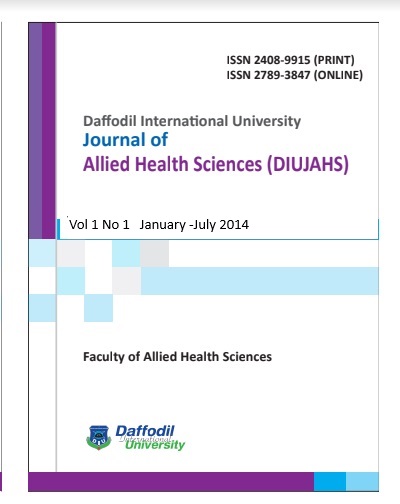Determinants of Delivery Care in a Selected Rural Area of Bangladesh
DOI:
https://doi.org/10.36481/diuhls.v01i1-2.dbmmzn17Keywords:
Rural Bangladesh, Bangladesh--Rural conditionsAbstract
Ante natal care service was utilized by 62.5% respondents. Majority (80.3%) of the respondents delivered at home and most of them (66.4%) felt that home delivery was comfortable. A considerable percentage of deliveries (50.6%) were attended by traditional birth attendants. Mothers who had one living child had the highest percentage of hospital delivery compared to those who had two or more living children. Educational level, access to mass media (watching TV and listen to radio), wealth index, antenatal care use and number of ANC visit had a positive significant (p<0.001) effect on the place of delivery care. The results of binary logistic regression analyses showed that, education of the mothers (p<0.05), living children (p<0.002), mass media (p<0.02), wealth index (p<0.05), antenatal care use (p<0.001) and number of ANC visits (p<0.001) correlates with delivery care. In this study socio-demographic factors were associated with delivery care practice. The study suggested that the significant effect of delivery care, education of the mothers, living children, mass media, wealth index, antenatal care use and number of ANC visits are determinants of delivery care of rural women.

